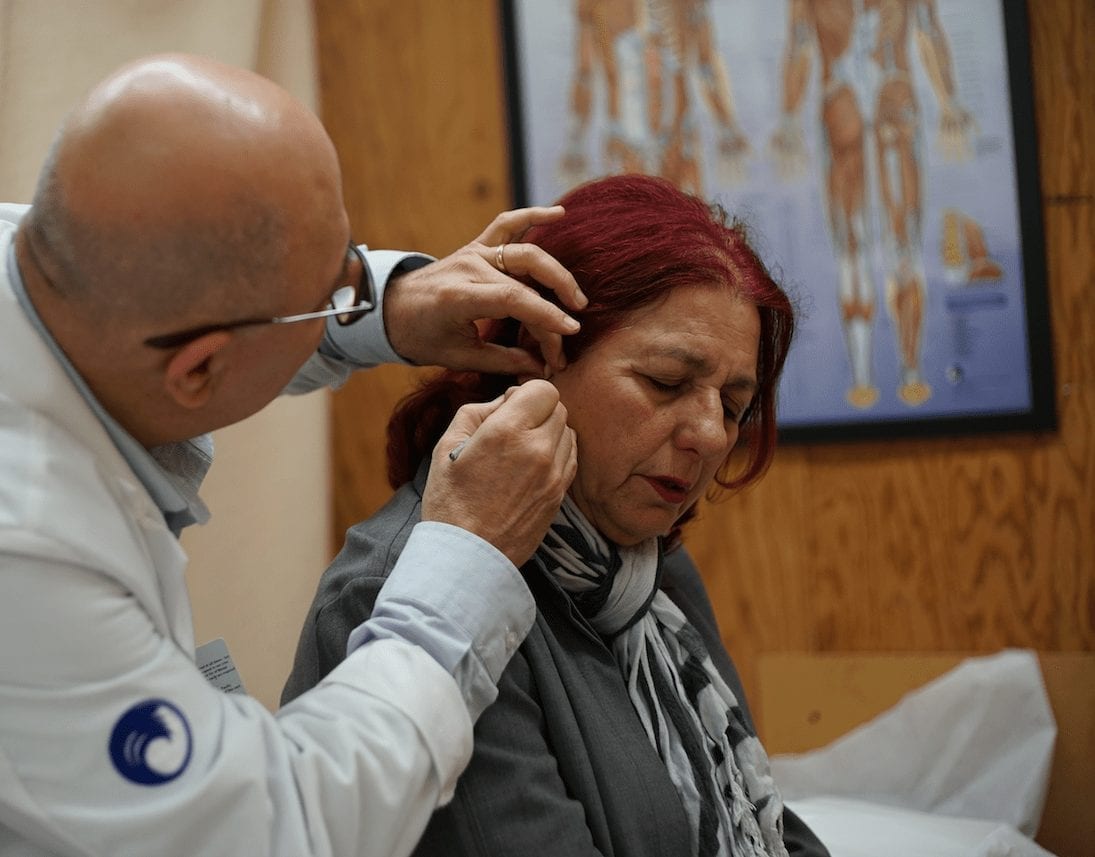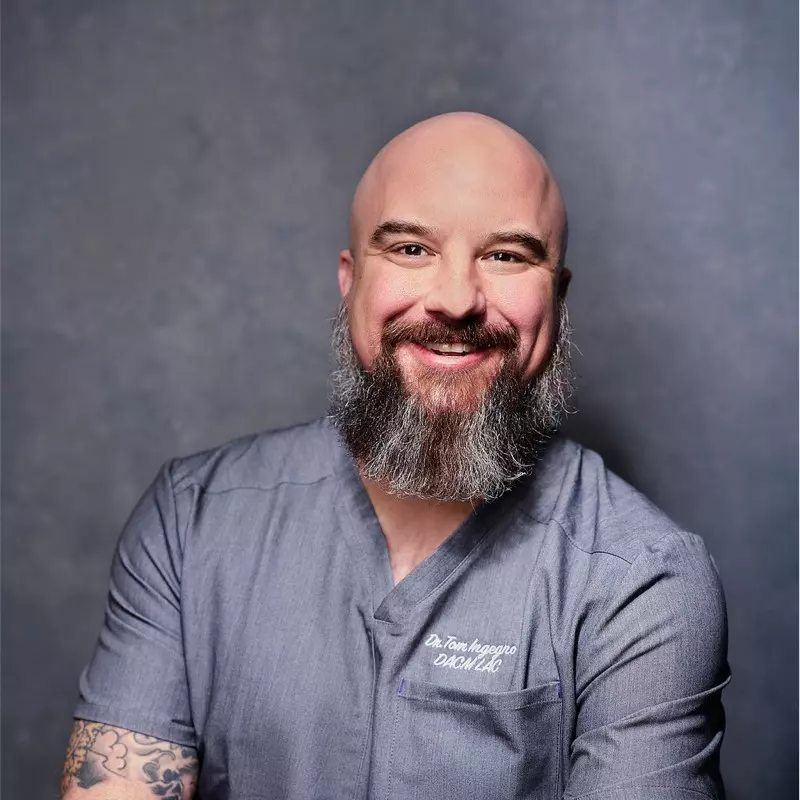In 2015, I had been in practice 15 years and had established myself in Baltimore; my lease was coming up and I had to decide what my next steps were. Three options lay before me and all were viable. I could have simplified my life, cut my current office down to a solo practice, let go of the employees and other practitioners leasing from me, and run a small clinic with just two rooms and a front desk. Another option I explored was updating my family’s passports, skipping town, opening up a small shop in some Central American country, and living a stress-free life. The option that excited me the most, however, was to make my workload infinitely more complicated and attempt to put together a center with multiple modalities that followed the same ultimate goal of acupuncture: to provide patients with therapies that stimulated the body’s natural healing processes. Some days I wish I had gone with either of the first two options, but my mental health be damned, I chose to build a center. I looked at how acupuncture worked and tried to find simple biomedical principles to describe it, then searched for services that caused both a reduction in inflammation (Frantz, 2017) and increased circulation (Yao, 2015)
The quest for new modalities
In my search for cutting-edge and new services that still adhered to the previously mentioned criteria, I found Whole Body Cryotherapy (WBC). WBC is a new trend in the US but was invented back in 1978 by Dr. Yamaguchi, who was looking for a way to decrease inflammation and reduce the pain of rheumatoid arthritis. The process involves an intense rapid cold exposure, usually from air cooled with liquid nitrogen for up to 3 minutes. This exposure causes contraction of tissue from the skin level down to the joint spaces, which efficiently squeezes byproducts of inflammation back to the core of the body. When the treatment is over, the body rapidly warms up causing massive vasodilation and allowing fresh blood to bath the tissue. (Westerlund, 2003) This contraction during the cold exposure also drives blood back to the torso, enabling it to pick up more oxygen from the lungs and more nutrients from the gastrointestinal tract.
From a physiological response perspective, cryotherapy was akin to acupuncture, in that it reduces inflammation and improves both the quality and circulation of blood flow. There was, however, an issue with classical traditional East Asian theory and the use of cold. The classical theory states that cold is a yin pathogen that can injure yang (Macioca, 2015 p. 297). Would incorporating WBC do more harm than good? After review, several studies showed increased energy, metabolism, and a significant release of endorphins (Leppäluoto, 2008). These effects, when looked at in yin/yang terms, seem to be yang in nature. Could it be that this extreme short-term exposure to cold is activating the yang within the utmost yin? This question would require further study, but what we’ve seen in the clinic may suggest this to be the case.
Combining WBC with Acupuncture
The primary goal of our clinic is to get the patient as much therapeutic value as possible, so we try to employ a synergistic approach whenever feasible. Our original theory was to have patients do a WBC before acupuncture, to start increasing blood flow rapidly to make the acupuncturist’s job easier. What we found was that the endorphin rush and subsequent energy boost made even some of our calmer patients a little too alert to lay down for an hour. Switching the order seemed to help. We found that the very calming, parasympathetic nervous system acupuncture treatment followed by very stimulating, cold therapy to be a better fit for patients.
Clinical Observations and Patient Outcomes
Overall, patients who receive both acupuncture and WBC during treatment have been reporting better pain relief, sleep and overall quality of life versus patients who have been receiving only one of those two modalities. It would be interesting to develop a study using MYMOP or some other patient reporting tool to compare and contrast results more formally between patients who choose one service over the other, or both. It is difficult to do in our clinic as patients choose the treatments they want and may not be interested in having their course of care randomly selected for them.
My clinic has been running with new equipment such as WBC for over a year, and we are excited to see how we can further enhance our efforts to keep inflammation low and our patients feeling their best. We hope to expand these efforts into a more formal case series to better understand how mixing modalities affect patient outcomes.
Are you interested in becoming a certified acupuncture professional?
Visit the links below to explore our specialized acupuncture programs at a campus near you:
References
Frantz AL, Regner GG, Pflüger P, Coelho VR, da Silva LL, Viau CM, de Souza MS, da Silva JB, Picada JN, Saffi J, et al. Manual acupuncture improves parameters associated with oxidative stress and inflammation in PTZ-induced kindling in mice. Neurosci Lett. 2017 Sep 22;661:33-40. doi: 10.1016/j.neulet.2017.09.044. [Epub ahead of print] PubMed PMID: 28947384.
Leppäluoto J, Westerlund T, Huttunen P, Oksa J, Smolander J, Dugué B, Mikkelsson M. Effects of long-term whole-body cold exposures on plasma concentrations of ACTH, beta-endorphin, cortisol, catecholamines and cytokines in healthy females. Scand J Clin Lab Invest. 2008;68(2):145-53. doi: 10.1080/00365510701516350. PubMed PMID: 18382932.
Maciocia, G. (2015). The foundations of Chinese medicine: a comprehensive text. Edinburgh: Elsevier.
Westerlund T, Oksa J, Smolander J & Mikkelsson M (2003) Thermal responses during and after whole-body cryotherapy. J Therm Biol 28: 601–608.
Yao J. [Acupuncture theory of promoting blood circulation and removing stasis and its clinical application]. Zhongguo Zhen Jiu. 2015 Apr;35(4):389-92. PubMed PMID: 26054154.
Featured Posts:

